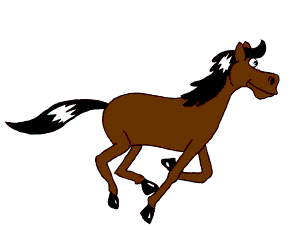Understanding Creative Media Industries
In this course I will be discussing a variety of Creative Media Industries, including:

Publishing is one of Medias largest industries, employing around 200,000 people. Publishing is made up of a few different categories, including: Books, Directories and Mailing Lists, Journals, Magazines and Business Media, Newspapers, News Agencies and other Information Services. Publishing has a highly qualified workforce, with 51% holding an undergraduate degree or equivalent qualification, rising to 70% in book publishing. Companies within publishing include: Advertising Association, All Party Parliamentary Group on Publishing, EDiTEUR, Association of Publishing Industustries and The Newspaper Society. They're hundreds of these kinds of companies and together make publishing the largest source of employment in the Media Industry. With the publishing industry making it's money through newpapers and books, it's biggest threat is certainly the internet as most of these things can be found for free with much more convenience. The overall Publishing industry makes at least £10 Billion. The industry consists of a majority of small companies: 88% of them having less than 10 employees. Yet the 3% with 200 or more employees have over half of all those working in the industry on their payroll.

Radio delivers speech and music to the audience. It covers a large variety of genres but with a personal touch. The radio industry employs roughly 22,000 people. However, the radio industry is not stuggling, but is certainly facing challenges as it has to compete with the other sectors in Media are more appealing. 89% of the UK population tune into radio each week, 24% listen via phone, 37% listen online and 31.5% of medias audience listens to radio. Categories under the Radio industry include: public services and commercial. Public services include the BBC which does not make money, commercial includes the majority of networks which do make money.

TV is still one of the most popular industries in Media. TV alone employs roughly 55,800 people and has sustained it's popularity for years. Popular TV networks include ABC, CBS and Dave. Regional TV companies include: 5, BBC and ITV. There is also around 300 cable and satellite. By far the largest part of the industry is comprised of around 850 independent production companies. They make many of the best-known programmes on television - programmes like the X Factor, Big Brother and Life on Mars. The biggest companies have turnovers of between £100-200m per year and employ thousands of people in the course of a year. But the typical independent production company is much smaller than this.
Careers within advertising are diverse and range from illustrators and photographers through to printers and sales staff. The advertising industry currently employs roughly 17,000 people. Jobs within the advertising industry include: Proofreader, Art Editor and Public Relations Officer. Combined, the advertising companies make roughly £6.2 billion per year and 70% of the industry is based in London. Advertising funds 75% of commercial television, 95% of national press, 80% of magazines, and 95% of commercial radio.
Animation

The animation industry in the UK consists of a workforce that stretches across many of the sectors in the creative media industries. You will find animated content on television, in feature films, commercials, websites and computer or video games. The animation undustry currently employs 4,700 people, which compared to the other undustries within media, is reasonably low.
The Animation Sector can be roughly divided into four main disciplines:
- 2D drawn or traditional;
- 2D computer generated
- stop frame; and
- 3D computer generated.

Photo Imaging is extremely well percieved in London, with 44,000 people working in the industry and 38% of that number located in London.
The remaining companies can be broadly divided into the following categories:
- Image producers (including laboratories and minilabs)
- Photo retail
- Picture libraries and agencies
- Manufacturers
- Support services (e.g. equipment hire and repair)
Across the industry as a whole, 91% of companies employ five people or fewer.
Photo Imagine is also strongly linked with photography which is a job role within the industry.
The Interactive Media industry is worth several billion pounds and employs roughly 40,000 people. This industry is ever growing and covers a large variety of sectors, including: culture, entertainment, information, stories and society. Interactive Media includes many popular social networks such as: Facebook, Twitter and YouTube.
Games can be used through video arcades and consoles. The industry began in the 1960s but didn't really take shape and become popular until the 1980s. Developing top of the range Computer Game titles now involves large teams of people, and costs millions of pounds. The games industry employs roughly 10,000 people. Although a small number, the games industry is ever growing and is beginning to become one of the most popular industries of Media.

The film industry includes: Development, Production, Facilities, Distribution, Exhibition and Export and currently employs around 27,800 people. In 2006, the UK film industry contributed £4.3 billion to the UK economy. Film theft was estimated to have reduced the legal UK film market by £404 million in 2007; illegal downloading and copying of films remains one of the major challenges for the industry.











